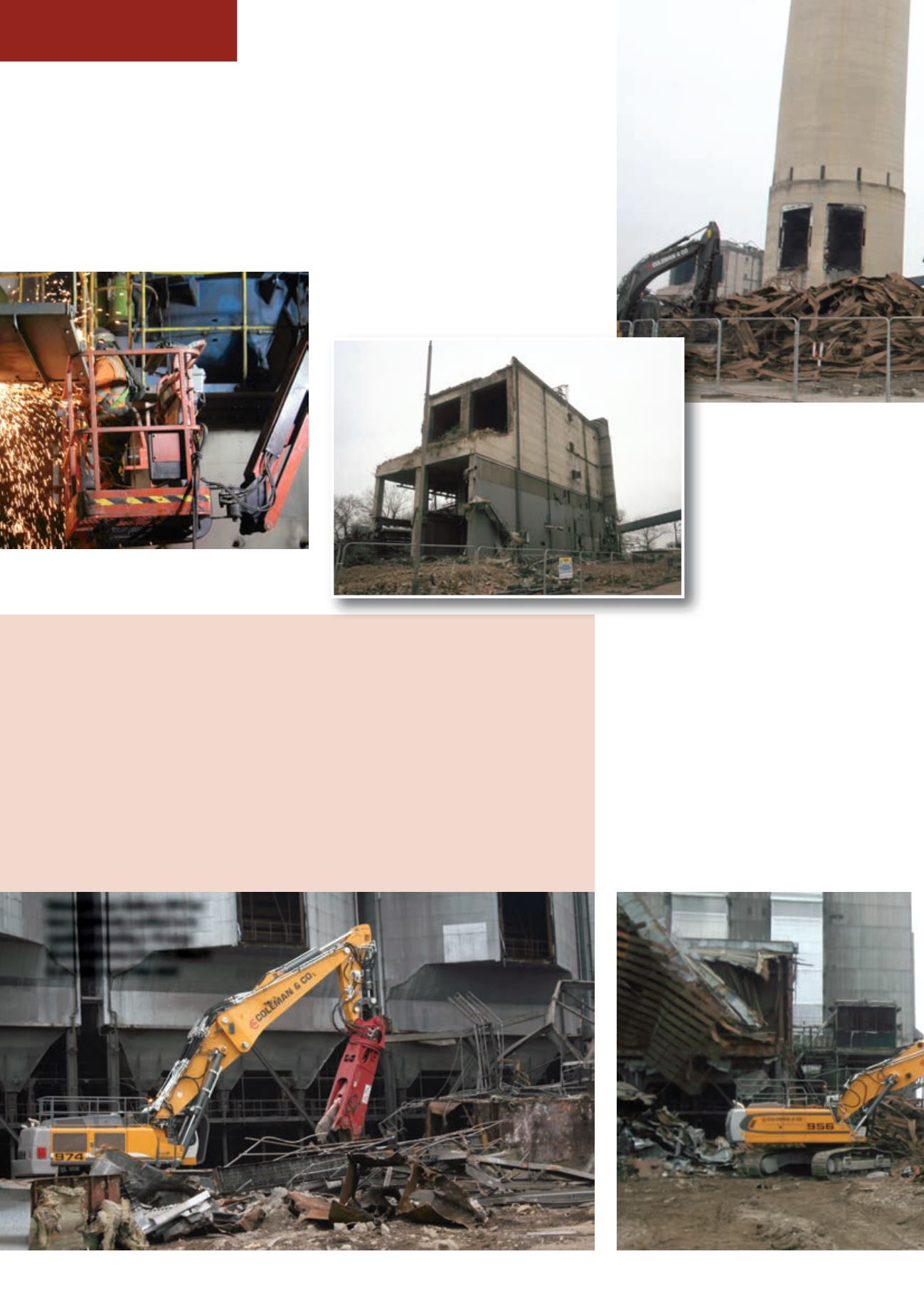
38
MARCH-APRIL 2015
d
&
ri
SITE REPORT
The only remaining structure from
the coal plant, with the rest being
the first to be removed
03.00 and05.00 am and the towerswere
eventuallydemolished at 05.01am.Despite
the earlyhour of the implosion, the event
proved amajor draw for the local population,
with several thousand turningup to view the
removal ofwhat hadbeenmajor features of
the local skyline.
Demolition thenbeganon the core
plant (coal plant, turbinehall, boilers and
precipitators) inDecember 2014, andby the
timeof
D&Ri’s
visit, the turbinehall had
been almost completely clearedof plant.
According to sitemanager JohnFoster, the
initialworkwas external to themainplant.
“With just threemachines, wedismantled all
the conveyor belts and removed the entire
coal plant from the owner’s land. In addition,
anything at height had tobe removedbefore
thenesting season started to ensure therewere
nodelays caused to thedemolition. The actual
demolition reallybegan inApril 2014.”
Johnwas relaxed about the challenge
Coleman faces in carryingout thework,
havingbeen involvedwithpwer stations all
of hisworking life– first in
their construction andnow
their demolition, but hewent
on: “One of the challengeswe
face is finding capable local
operatives. Currently there
are around120workers on
site, with55of thesebeing
our employees and the remainderworking
for our asbestos remediation sub-contractor
OCS. At peak, therewere 175personnel on
site, withmost of the additionalworkers also
working forOCS.We are currentlyoperating
13machines, including thenewLiebherrs,
although the job is such thatwe could just
use 11. The additional ones giveus cover in
the event ofmachinedowntime and should
Colemanget busier and themachines be
requiredonother sites, thenwewill transfer
them across,” said John.
The scaleof thedemolition is impressive,
with a substantial tonnageofmetal to
beprocessed and recycled. All arisings
are cleaned and separated in the various
Heavy duty metal
The flagship of the six Liebherr excavators delivered to Coleman & Company as a result
of the company commencing work on the Didcot A power station demolition is this R974.
Themachine has beenmodified to carry a 14 tonne Stanley LaBounty MSD 7500R-SL
demolition shear. To achieve this, Liebherr added a 6m (19.7 ft) extension to themain
boom and a 2.9m (9.5 ft) stick fitted with a heavy duty super mass excavation cylinder.
In addition, themachine sports uprated hydraulics and a special by-pass valve has been
fitted on the shear to generate less back pressure and thereby improve fuel economy. The
machine carries the same counterweight as used on the 43m (141 ft) high reach version
of the 974, giving an overall machine weight of 130 tonnes. Liebherr has rated the
machine for full 360° operation, as is the case with all its demolition excavators. Similar
modifed 974s have been supplied to French contractors Cardem and Brunel. The new
machine now gives Coleman the capability to process heavy duty steel scrap fromDidcot
and other future industrial demolition projects.
Some 70,000 tonnes of boilers, flues, ducting and
other elementswill be removed by the time demolition
is completed
Coleman’s new Liebherr 974 has
been specificallymodified to be
capable of wielding a 14 tonne
Stanley LaBounty shear to allow it
to process heavy duty steel
One of Coleman’s high
reaches atwork removing
plant from themain power
station structure


